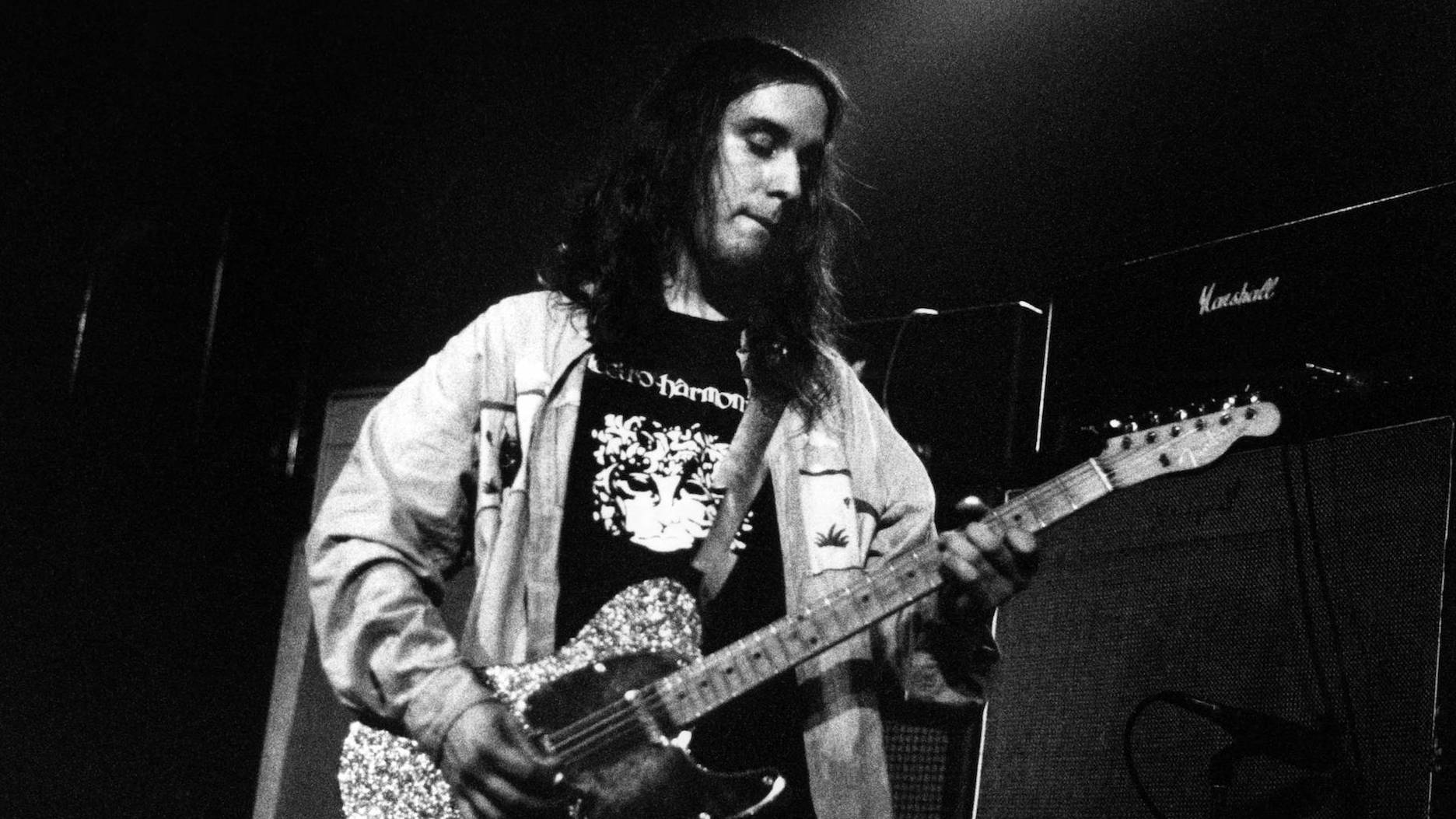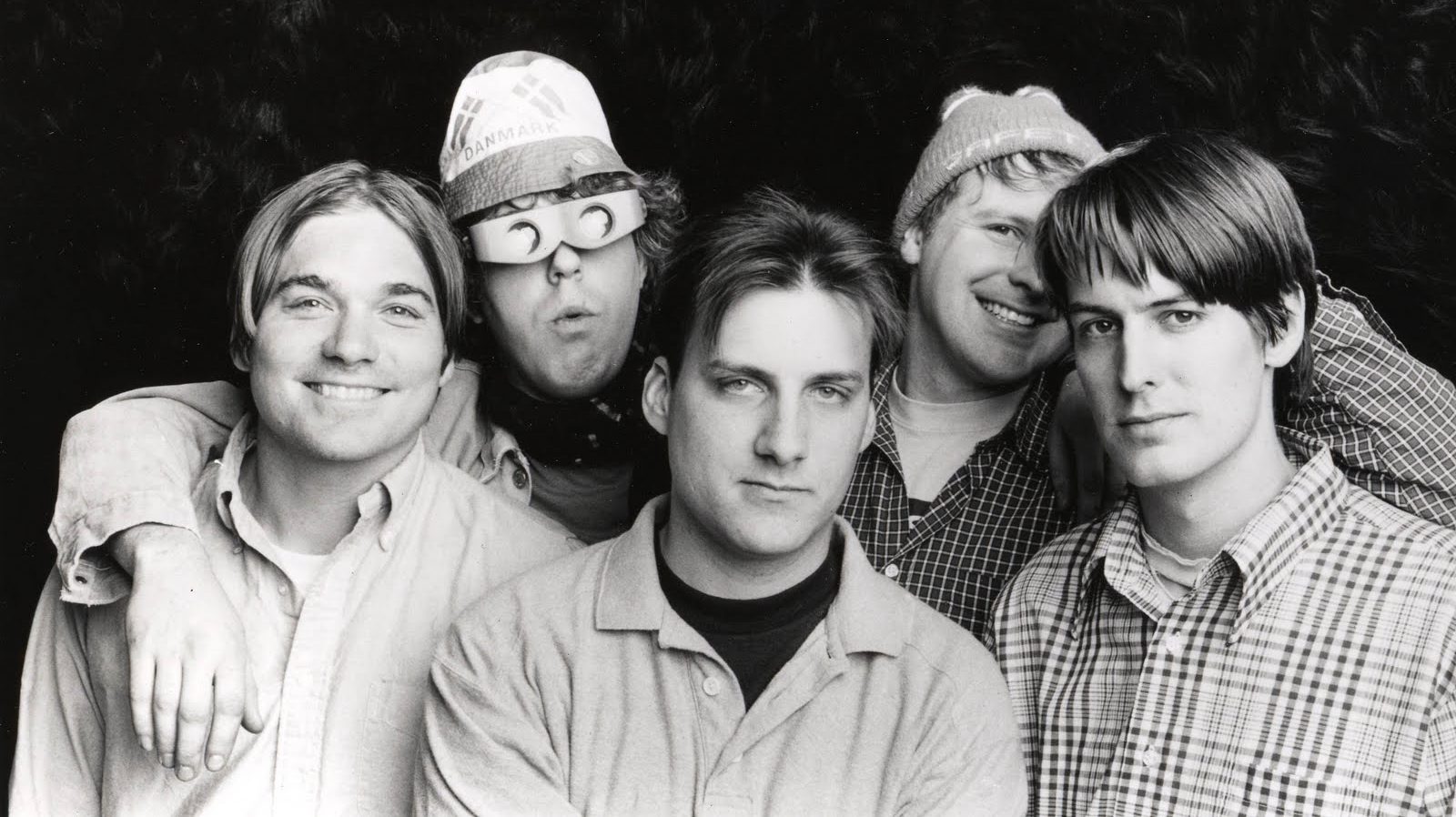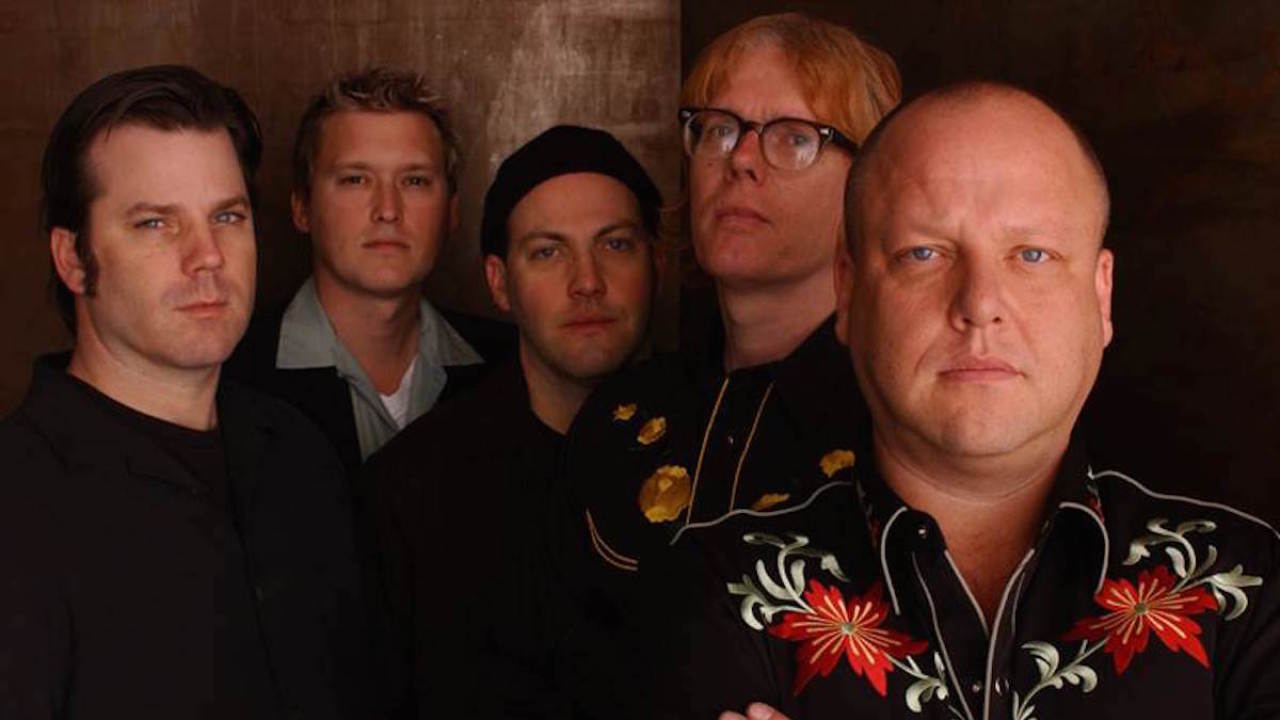In the Wilderness is a feature in which a group of Strange Currencies contributors examine an overlooked or under-appreciated period of an artist’s career. In these “Slack chats,” we discuss highs, lows, and misconceptions, in order to shed new light on an era that we feel deserves a second look.
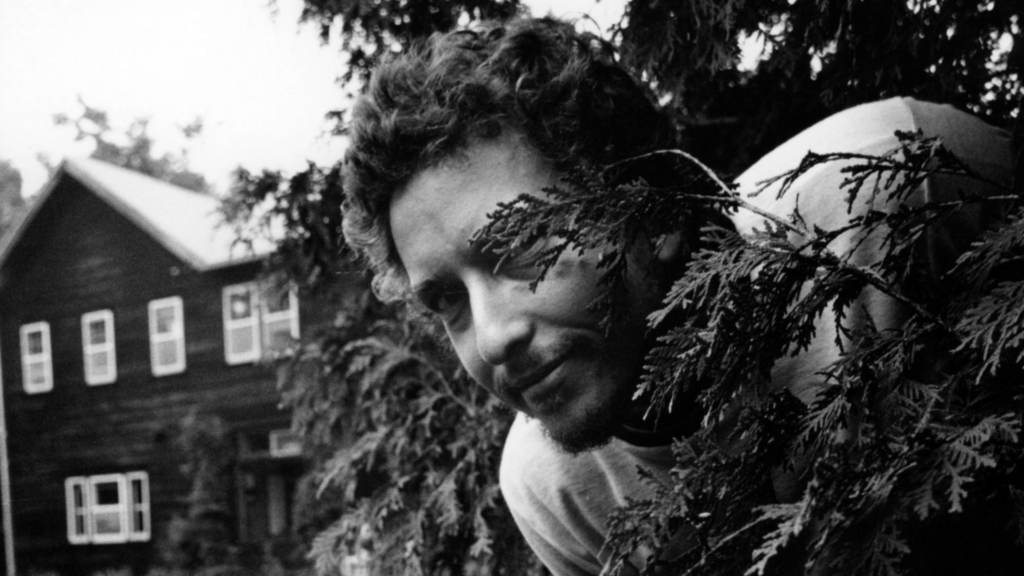
Welcome to Season 2 of In the Wilderness! What better way to kick off our second round of this feature than by examining the oft-misunderstood era that immediately followed Bob Dylan’s dizzying mid-sixties peak? For this installment, I’m joined by George Budney and Bert – two long-time Dylan fans who share my appreciation for this era of the singer-songwriter’s storied career.
Dylan temporarily retreated from the public eye in 1966 – at least as much as a decade-defining artist can – following that year’s masterful Blonde on Blonde, a headline-grabbing tour of the United Kingdom, and a mysterious motorcycle accident. Scraps of new material – namely a series of homespun recordings known as “The Basement Tapes” – would begin trickling out in 1967, but when Dylan reemerged with John Wesley Harding at the end of that year, it sounded to many like the work of a completely different artist than the one who had reluctantly become the “voice of a generation.”
In this chat, George, Bert, and I discussed the seven studio albums that Bob Dylan released from 1967-1974, “The Basement Tapes” that he recorded with The Band in 1967, and several additional tracks that found eventual release as part of Dylan’s ongoing Bootleg Series. Enjoy!
MR: It’s been a long time since we’ve done one of these, and sure enough, this is the same personnel that did the last one.
GB: Good to be back, with a slightly better world situation…
NB: No kidding!
MR: We’ve generally started these by explaining why this could be considered a “wilderness” era. Why does it make sense here?
GB: I think in a sense it’s the original wilderness era: Dylan went electric, burned out physically, and disappeared for a couple years before returning with (yet another) new sound. In prep I watched No Direction Home; he’s so exhausted by 1966 that he doesn’t seem to find joy in it anymore.
MR: It’s pretty well known that he wanted out of the spotlight – to a certain degree – after Blonde on Blonde, to the point where a lot of people talk about the “motorcycle accident” as if it may have never actually happened.
GB: He’s searching for his sound, even down to his voice.
NB: He was playing with The Band, Johnny Cash, Leon Russell, and all kinds of people.
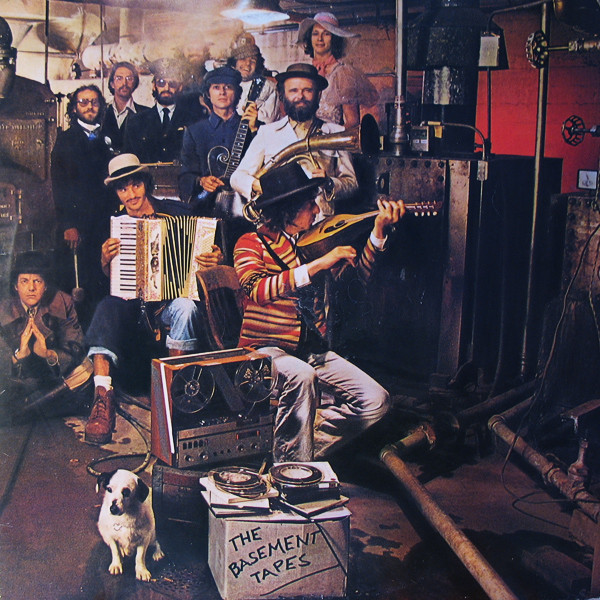
MR: The Basement Tapes loom very large in this era. Their recording [1967] basically starts it, and their release [1975] coincides with its end. There are some recordings during this time that people interpreted as self-sabotage, but I don’t see that as the case with The Basement Tapes.
NB: Definitely not. It’s got some real great songs! It is as much a record by The Band as it is his.
GB: When did his association with The Band start? Touring the UK?
MR: Yeah. 1966.
GB: New band, somewhat hostile audiences, terrible journalist questions, awful British pop fans; it’s enough to make anyone want to change up.
MR: Have either of you heard the Complete Basement Tapes box set that came out in 2014? It’s pretty overwhelming.
NB: I’m sure. I remember reading about it. He covered a lot of 50s songs, is that right?
MR: Yeah, a lot of old country covers and pop songs. Those recordings show him working to rediscover his love for playing music.
GB: What’s the recording background: after the UK tour, post-accident?
MR: Yes, and yes.
GB: Back home, trying to expunge.
MR: He took the opportunity to take a few months off – which may not seem like a big deal – but was a long time for a pop star at the height of fame to be sitting out.
NB: I think they just left the tapes rolling for days and days.
GB: Just trying to capture magic.
MR: Yeah. That’s kind of what it sounds like. The Complete package is a lot to take in. Maybe too much. It’s not the kind of thing that you can just put on for a casual listen. Listening to it is almost academic in a sense.
GB: It doesn’t seem like it was recorded with the intention of release. It’s a bit of a vacation home movie, almost.
MR: Certainly not the vast majority of the complete set. The eventual 1975 release is practically glossy in comparison. The “officially” released stuff is almost all of the best of it, with a few exceptions. Most of the original compositions – even those that made the eventual release – are pretty lightweight. There’s an easygoing spirit to the finished product, but an extremely loose vibe to the whole thing.
GB: The looseness comes across well in songs like “Going to Acapulco”; it explains the slower cadences.
MR: Very slow. It’s extremely sleepy music.
GB: What stands out to you?
NB: I have listened to this several times over the past few weeks. It’s great right from the opener, “Odds and Ends.” I like the whole thing, but I really like 6-7 songs on each disc. “Going to Acapulco” and “Don’t Ya Tell Henry” are great!
MR: I like everything on it, but – for me – it’s an example of a recording that is more than the sum of its parts. I mean, there are definitely a few songs that stand out as somewhat major statements: “Tears of Rage,” “This Wheel’s on Fire.” I think one of the things that really makes it endearing is the humor.
GB: “Million Dollar Bash” always makes me laugh. Dylan doing a bad Dylan impression.
NB: Fairport Convention covered it.
MR: A lot of the Basement Tapes songs – and several that weren’t on the finished product – were farmed off to other groups.
NB: Did “Quinn the Eskimo” come from this?
MR: Yeah, “Quinn the Eskimo” was a big hit for Manfred Mann. “You Ain’t Goin’ Nowhere” and “Nothing Was Delivered” are classics, and The Byrds did excellent versions of both on Sweetheart of the Rodeo. They also recorded “This Wheel’s on Fire” in 1969. The Band recorded “I Shall Be Released” and “Tears of Rage” for Music from Big Pink.
GB: Wow. Heck of a wilderness start. Disappear and then top the charts with a bunch of other artists.
NB: Right. I think that was what sent people looking for these songs.
MR: Yep. Several of these recordings leaked out as the Great White Wonder bootleg – the first widely traded bootleg by a major artist.
GB: That bootleg must have been pretty seminal.
MR: Definitely kickstarted the whole bootleg record market and created a legend around these sessions. The widespread popularity of the bootleg basically forced Columbia to release the 1975 version.
GB: Very different context thinking about it as a 1967 recording versus a 1975 release. 1975 feels like an afterthought. 1967 is amazing because you think of all the stuff that came from this: the whole Laurel Canyon sound and The Band/Creedence/Allman Brothers feel.
MR: Yep. The relaxed vibe – and emphasis on traditional song forms – really seemed to anticipate those sounds. Keep in mind that the pop world was still pretty decked out in psychedelia when this stuff was being recorded. Some of the tracks – most of those with The Band singing – were recorded a bit later, so I didn’t much consider them as part of this “wilderness.”
NB: Least favorite song here?
MR: There are a lot of lesser moments on the full box set. From the 1975 release? I don’t know. Maybe “Tiny Montgomery,” but even that one is funny.
GB: Tough question. “Bessie Smith” or “Tiny Montgomery.”
NB: Those are my two also. “Bessie” is a bummer.
GB: Yeah, that’s the right word for it. More so within the context of the rest.
MR: There’s a small subset of Dylan fans that consider The Basement Tapes to be the best thing he ever did. Are they crazy?
GB: I can understand it – but yes, they are crazy. No one thing is the best thing he ever did. That is why he is great.
NB: Not the best thing he ever did.
MR: I mean, there’s no way that they can compete with the 65-66 era in terms of quality or brilliance, but I can definitely hear the influence in this stuff in a lot of other places.
GB: Those people were also probably miserable to hang out with at parties.
MR: Sure, if they’re just trying to be contrarian, but I think one could make the argument that this is the most “fun” thing Dylan ever made. For those who value that, I could see how it might be a/the favorite. Besides, I’m not fun at parties, so it makes sense that I’d defend those folks.
GB: I have pictures of you wearing a piñata head that say otherwise.
MR: The Basement Tapes is pretty formative for this wilderness era. It established a loose mentality that Dylan would really lean into – for the most part – up until Blood on the Tracks. While I don’t think that it’s Dylan’s best work, I agree with those who call the finished Basement Tapes a masterpiece. It’s one of the most unique records in the rock canon. There’s nothing else that’s quite like it, and yet it was extremely influential.
NB: Yeah, it’s essential! I discovered this album long after I knew everything else from the 60s. It was like finding Dylan all over again!

MR: Shall we move on to John Wesley Harding? While I just said that The Basement Tapes set the template for a loose vibe, I’m not so sure that comes through as much on John Wesley Harding as it does on the albums that follow. There’s some heavy stuff on this one.
GB: Yeah, some heavy, but also some of the best ‘jive’ he ever released.
NB: This record threw me off when I first got it.
MR: While The Basement Tapes had introduced that loose vibe, this album – which was recorded right afterward – found him only partially showing that in the public eye. There’s a lot more cryptic imagery on this album than anything that comes later in this wilderness era.
GB: Carry over from Blonde on Blonde? Probably some label pressure for that.
NB: Why did he name this record after a Texas outlaw?
MR: Not sure. He really seems to get into the outlaw motif during this era – even aside from the Pat Garrett & Billy the Kid soundtrack.
NB: Big time.
GB: Ties back a little to that country outlaw/Johnny Cash history
MR: Yep. He was hanging with Johnny at this time.
NB: Yeah, he was on his show a bunch.
MR: There’s a lot of biblical imagery on this record as well. This record has a lot of death, betrayal, and other ominous stuff going on. It feels laid back, but there are some intense themes scattered throughout. “Dear Landlord,” “I Pity the Poor Immigrant,” and “I Am a Lonesome Hobo” really stand out in that regard. Obviously “All Along the Watchtower” – which is also super ominous – is great, but what else stands out?
NB: “As I Went Out One Morning.”
MR: Yeah, “As I Went Out” is great. What’s the moral of that one though? It’s really odd. I mean, there’s a clear reference to slavery – and a seemingly unrelated Tom Paine – but I’m not sure what the message is there.
NB: Hmm… is it Thomas Paine (Common Sense)?
MR: I’ve always wondered, but I don’t think so.
GB: “The Ballad of Frankie Lee and Judas Priest” is one of my favorite all-time Dylan songs.
NB: I dig that one! It is pretty good alongside some of his other epic songs.
MG: Yeah, “Frankie Lee” – while not one of the best – is one of my favorites, because my dad loves it.
GB: I also really like “I Dreamed I Saw St. Augustine.”
MR: “St. Augustine” is great. One of his most underrated.
NB: “I’ll Be Your Baby Tonight” sort of foreshadows Nashville Skyline. It’s a great closer!
GB: Yeah, good call.
MR: I’ve always really appreciated the bass and drum work on this album. I tend to prefer the mono mix, which emphasizes them a little more.
GB: As a follow up to Blonde on Blonde, it’s a pretty big direction change.
MR: It is. More compact. Blonde on Blonde is so cryptic that you don’t even try to decode most of it, whereas this one gives you what seem to be a lot of clues, and in the end, “nothing is revealed.”
GB: Much more story-driven, for narrative. Less imagery.
NB: I will say, though, that this record requires careful listening. It doesn’t make sense instantly. Which is something he would keep doing.
GB: Culminating with Blood on the Tracks. “Lily, Rosemary and the Jack of Hearts” would fit here, with some tweaking. Less backing band, more stripped down. I hear callouts and echoes between the two records. Looking at the full set of records in this era, I think this one hangs together better for me than most.
NB: It does. It’s real tight.
MR: Yeah. Other than The Basement Tapes, this is easily my favorite of these albums. I think the only weak spot for me is “Down Along the Cove,” and it’s not bad, just lesser… It’s a great album, but I can see why those who loved the previous few probably felt a little let down by it. That run of Bringing It All Back Home, Highway 61 Revisited, and Blonde on Blonde is God-tier.
GB: Sure, but it deserved a second – and third – listen. It’s a grower
NB: How do you feel about “Santa Fe.” I think it was recorded in ’67.
MR: It’s okay. I think another Basement Tapes song. It sounds like it, at least.
GB: They say Albuquerque is only 90 miles away (wrong artist, just gut response). I really like “Santa Fe”; one of my favorite “bootleg” tracks of his. I’ve put it on many a playlist.
NB: I dig it too.
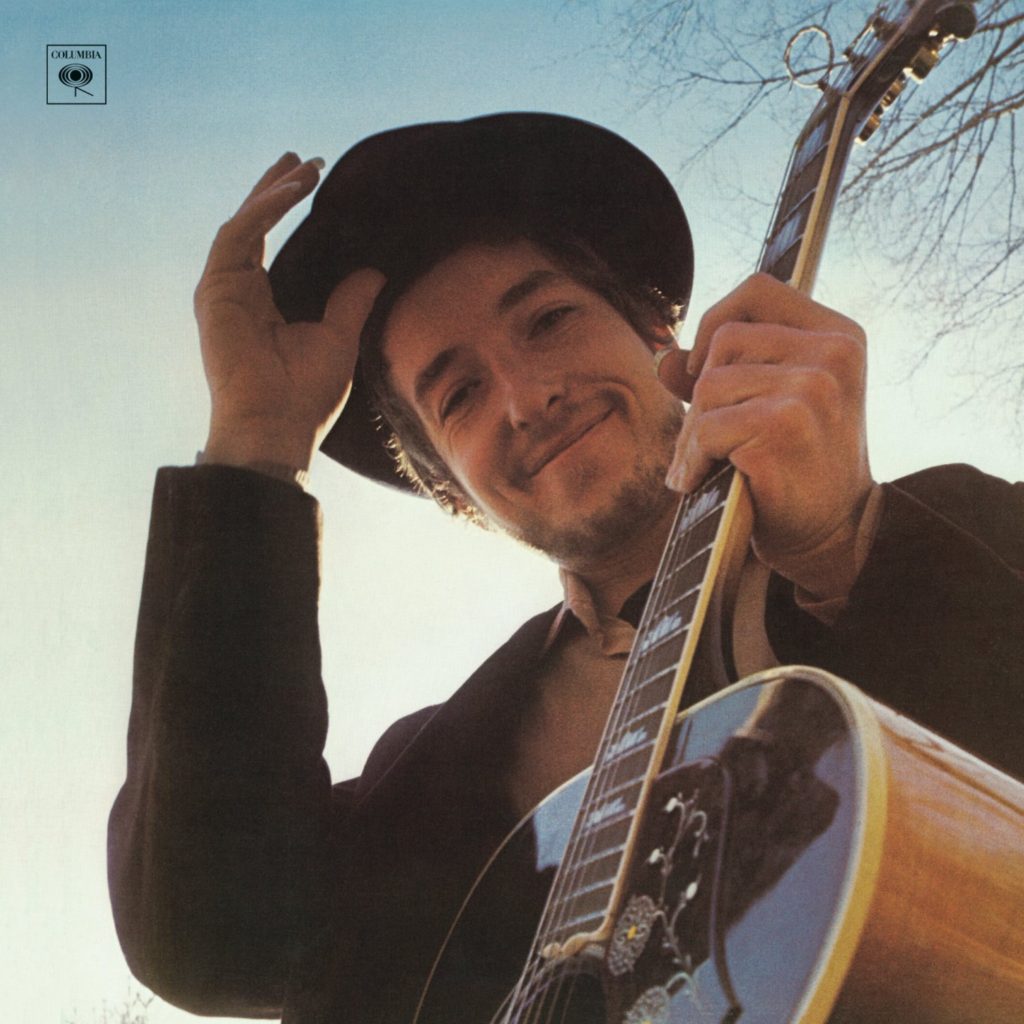
MR: Alright. Let’s talk Nashville Skyline.
NB: 28 minutes of fun.
GB: My Mom’s favorite Dylan album. She graduated high school around this time, did a tribute to it in her senior photo.
MR: Super laid back. The voice takes some getting used to, but it’s definitely an enjoyable record.
GB: Dylan’s “Chris Gaines” era. In the lead up to this chat, I said every one of these is an excellent Sunday morning record – none more so than this one.
MR: I’d describe this album as “exceedingly good-natured,” which is quite a detour from his mid-sixties peak. Consider the moment: same year as Woodstock, peak of Vietnam protests, civil unrest. I can see how people really were let down by such an easy-going album.
GB: On the other hand, good for Dylan.
NB: Well, I’m sure the true hippies loved it.
GB: The weight of the world is heavy. Nashville mindset – a million miles from The Village. Why can’t he just have fun too? “Throw your troubles out the door – I don’t need them anymore…”
NB: I’m sure that’s how he felt!
GB: I appreciate this record more for that, a little.
MR: Yeah, I don’t begrudge him at all for it. As was mentioned earlier, he seemed so fatigued by the burden of expectations from 1964 on. The 65-66 stuff could have at least been pored over for deeper connections to contemporary turmoil, but this is a serious retreat.
NB: It’s one I didn’t have to listen to carefully 10-15 times and meditate on…
GB: There is as much to like here as with The Basement Tapes. The difference is that it’s more polished.
NB: Clearly, “Lay, Lady Lay” is the standout, but I love “I Threw It All Away” and “Peggy Day.”
GB: “I Threw it All Away” is in my top 10 all-time Dylan songs.
MR: “I Threw It All Away” is probably my favorite on the album. I’ve also always had a soft spot for “Tell Me That It Isn’t True.”
GB: The walking organ is my favorite moment on the record. It’s one of my favorite things he ever recorded, honestly.
MR: Yeah. I love that little organ riff after the title.
NB: “Country Pie” is classic! We used to blast it in the car because the kids loved it!
GB: Low point? “Peggy Day”? Especially with “Lay Lady Lay” behind it.
MR: I actually don’t love “Peggy Day” or “Country Pie,” despite Bert’s advocacy for them.
NB: The duet with Johnny Cash is not my favorite.
MR: That’s one that I really go back and forth on. I definitely prefer the original version.
GB: That voice… I don’t notice it anywhere else, but against Johnny? It’s hard to avoid.
MR: It’s an awkward duet pair.
NB: Real awkward.
GB: I just wonder what he was going for.
MR: …and that’s the thing with the album. It’s only 28 minutes; at least 10 of which are almost entirely disposable for me. The rest is pretty great.
NB: It’s true.
GB: Well when you put it that way… Those 18 minutes are pretty good though.
MR: I go back and forth on my rating of this one a lot – it’s either a heavy ‘4’ or a light ‘4.5’ on the Rate Your Music scale. If it catches me in the right mood, I love it. Sometimes though, it just seems so inconsequential.
GB: My only qualm is the length, but on the other hand it would suffer for being longer. I don’t think I’ve ever put it on and taken it off. I always can finish it. Kinda of like some Willie Nelson in that sense.
NB: Yeah, it really is great.
MR: Yeah. Great stuff. Just really, really slight.
GB: …but a Dylan record you don’t have to think much about is kind of a relief.
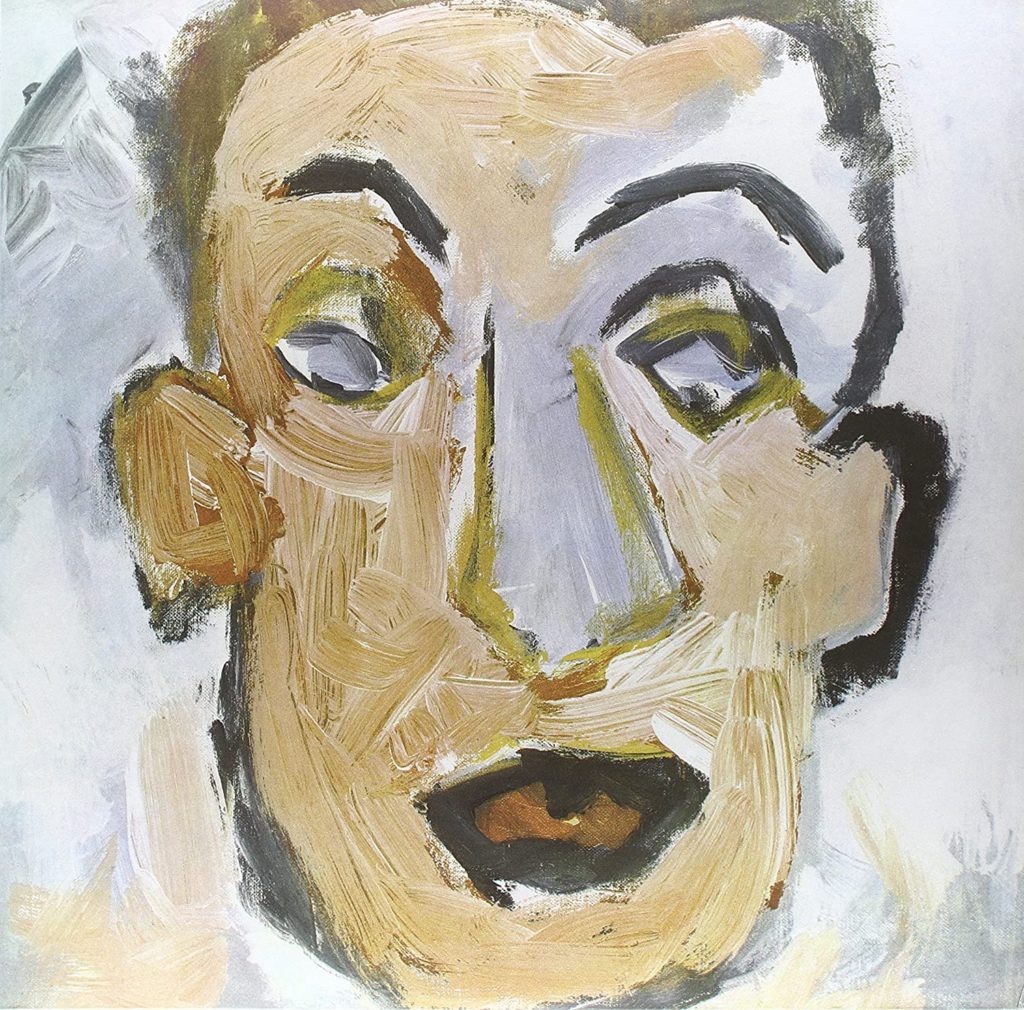
MR: Okay. Self Portrait. Fire away with all of your criticisms on this album, while I sit back for a few.
NB: Well, obviously it’s too long!
GB: Yes. 24 songs are a lot. Oh my God. Every time I hear “All the Tired Horses” I feel like I’m watching a bad action movie where the hero is in retirement on his ranch and they have to convince him to come back. Then he comes hauling ass down a dirt road in an old Camaro while “Gimme Shelter” plays on his triumphant return. I kind of hate that song because of that, and then “Alberta” comes in and completely redeems everything.
NB: “Alberta” is good.
NB: It has some ridiculous songs (“The Boxer”), but also some great ones like “Days of ‘49,” “Copper Kettle (The Pale Moonlight),” and “Quinn the Eskimo.”
MR: Admittedly, I have a hard time telling if that “Boxer” cover is sincere. Keep it coming…
NB: It’s cool that he does a Gordon Lightfoot song, but is it a good cover?
GB: I feel like Gord is hard to cover.
NB: Yeah, half-hearted blues renditions and folk songs. It’s just kind of boring. Even “Like A Rolling Stone” sucks here. The good songs are really just rambling instrumentals and jingles. He has two good covers and “Quinn” …and a few instrumentals that are good.
GB: Proof that self-portraits rarely work out. There are some moments: “Alberta” is good; I like “Wigwam,” though more for use on other soundtracks (more on this later). I feel like you have a lot to say, Matt.
MR: Greil Marcus’ review of the album infamously began with, “What is this shit?” However, I actually think this is my favorite album from the remainder of the “wilderness” era. The ones we’ve already covered are better, but I’d take this one over those that follow.
GB: I don’t know. I think I prefer New Morning. It’s just not an easy album to get in to, and it suffers from “wait, I could be listening to (other Dylan album).”
MR: I really like the fact that he seems to lean into the “I don’t give a shit what you think” vibe here.
GB: That is admirable, and in that context it’s a better release
NB: Oh, he damn sure does. But, is he even serious with some of it?
MR: People accused him of self-sabotage with this album, but I think that makes it all the more fascinating. Have either of you heard The Bootleg Series (Vol. 10)?
NB: Another Self Portrait? I have that. I like some of those songs way better! If you kept the good ones and switched the bad ones with some of those, you’d have a pretty good record! “Spanish is the Loving Tongue” is great! Get rid of “The Boxer” for that!
GB: Yes! I like that there is so much division here that he felt obliged to release Another Self Portrait, almost to mess with the purists.
MR: I’d agree that some of those takes may be preferable, but they’re still the same songs – some just in more stripped-down mixes. I think it’s great – one of my favorite Bootleg Series releases – but it actually gave me a lot more respect for the original version of the album. While I don’t agree that it was an act of self-sabotage, I think it was a deliberate attempt to send a strong message that he was totally over being seen as the “voice of a generation.”
GB: Again, good for Dylan. Shades of refusing to accept the Nobel.
MR: Going so far as to cover a bunch of old traditionals and songs by contemporary songwriters, and even engage in some “destruction” of his own classic (“Like a Rolling Stone”). That’s a baller move.
NB: He’s not a stupid man. He must have known what he was doing!
GB: Anybody that is concerned with positive reinforcement, in lieu of taking risks, shouldn’t be the voice of a generation.
MR: …but within that, you have an album that is way more interesting than the relatively mundane releases that follow.
GB: Sure, but it also explains the albums afterwards. If you stop caring, it reflects. The later albums are almost ‘fans only.’ The work suffers during the retreat.
MR: He kind of sets the template for the artistic “retreat” with this album. A template that people like Frank Black and Alex Chilton would follow.
GB: Sure – the original wilderness; but be wary should the wilderness become the lost.
MR: Yeah. This is total wilderness. …And I kind of love it.
GB: What is going on in his personal world at this point, do you know? The early albums are burnout and rediscovery. This is… something else.
NB: Jakob was born in December of 1969.
MR: Part of it is that this album had such a horrible reputation for such a long time. It was perceived as way worse than it really is, so there’s the idea of a salvage project; whereas an album like Planet Waves was probably overpraised for its accessibility. There’s a part of me that always wants to defend the runt of the litter. Of course, this won’t hold once we cover his 80s period. Knocked Out Loaded is absolute shit.
NB: It’s Dylan in 1969-1970. He was on a roll!
MR: Yep. Even if he’s coasting here, he’s still carrying a lot of that momentum from his peak. I won’t say that this is a great album, per se, but like I said, I kind of love it anyway.
GB: What stands out? “Belle Isle” is up there. “Alberta.” “Wigwam” for the Royal Tennebaums connection. Good context in the movie; falling in love at an older age. That lose thread – and Lebowski‘s – brought me the full glory of 70s Dylan.
NB: I like “Days of ’49.”
MR: I’ve always really liked “Belle Isle” – partially because of the cover by the aforementioned Frank Black. “Alberta” is great.
NB: “Copper Kettle.”
MR: Yep. That’s a good one. Looking at the individual pieces, Self Portrait is kind of weak, but there’s a statement made by them collectively. Viewed in the right light, it’s a pretty impressive statement…and yes, several things that could be seen as low points. The “Rolling Stone” cover isn’t great, but I think there’s meaning to it being here.
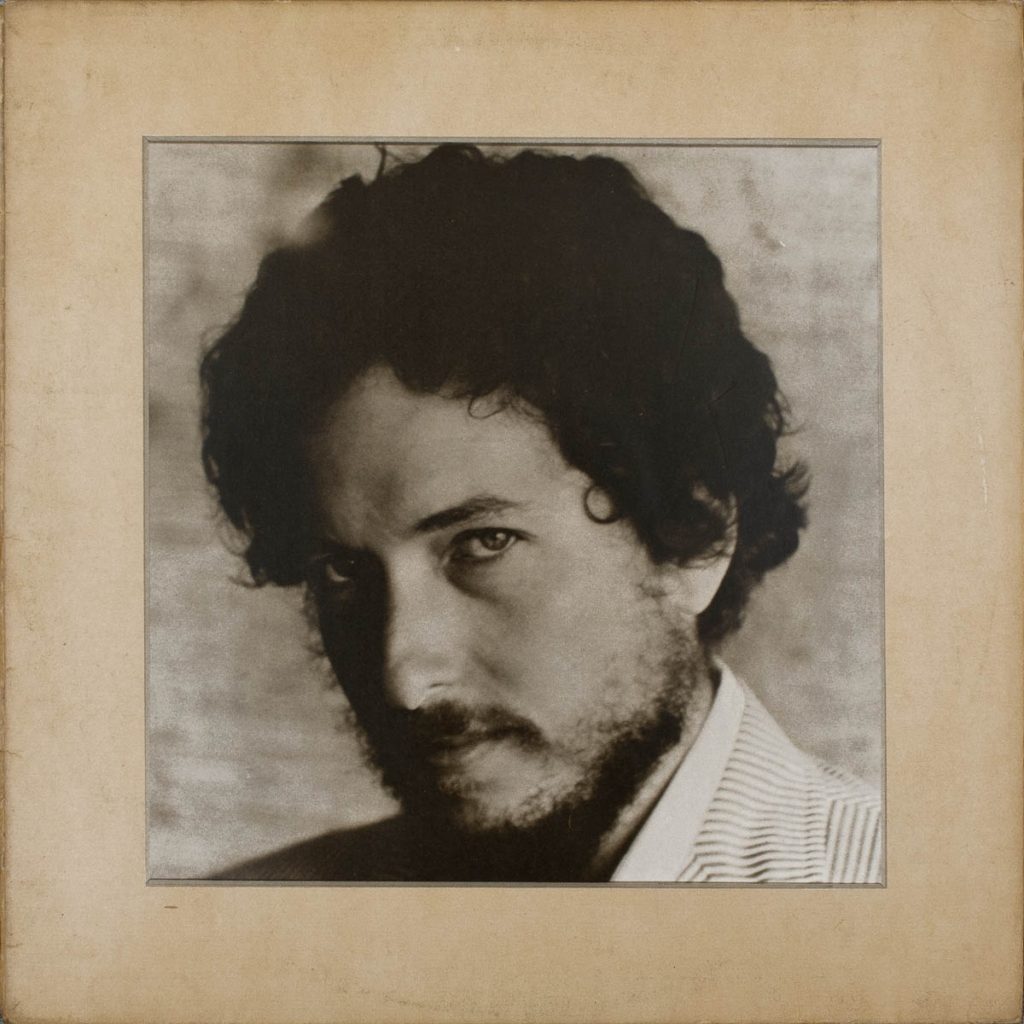
MR: New Morning. Thoughts?
GB: How is “New Morning” vs. “One Too Many Mornings” for a change in life perspective?
NB: It’s not a challenging album lyrically and isn’t amazing musically, but it’s good background music.
MR: It seems to me like it was an album that was underrated for a long time, and then became overrated after people “corrected” their opinion of it.
NB: I like a few songs. Title song is fine. “If Not for You.” “Sign on the Window.” “The Man in Me.”
GB: I go back and forth on his version of “If Not for You.” In the end I think I like George Harrison’s better, but it’s close.
MR: Oh, but you can have it both ways. The best version of “If Not for You” has both Dylan and George.
GB: “The Man in Me” – if for nothing other than The Big Lebowski. Absolutely perfect song for that movie. In fact, this album could be the soundtrack, if not for Creedence.
MR: I also really like “The Man in Me,” but will fully admit that it probably has a lot to do with Lebowski.
NB: Do you guys like “Sign on the Window”?
GB: I really like “Went to See the Gypsy.”
MR: Meh (to both).
GB: You’re crazy.
NB: What stands out for you, Matt?
MR: “The Man in Me,” “If Not for You,” “New Morning.” Those are my top three, and I don’t think any are great. “If Dogs Run Free” is my least favorite Dylan track up to that point. The scat stuff in the background is awful.
GB: Thank you. Someone had to say it. I appreciate the piano lead in.
NB: It’s bad. In fact, that song just about makes me angry.
MR: It really ends with a whimper as well. The last two songs are pretty bad.
NB: Yeah, should have ended with “The Man in Me.”
GB: Good signal that you can stop paying attention for little bit. “Father of Night” is kinda cool. I’d keep that over “Dogs.”
MR: George, I actually really like the version of “Gypsy” on Another Self Portrait. That one is playlist worthy. If you feel compelled to include it, please go with that version.
GB: Deal – because I do want to include it.
MR: Cool. That one is legit.
GB: I’m re-listening to it now. I think I like the organ version better. Sorry…
MR: Nooooooooo!!!!
GB: Nope – I think it’s true. The organ makes it. Very different songs; one is fun, one is dark.
MR: Sorry, George. The album version is lame.
GB: …then the chord progression about 1:10 in. Nope, I’m right.
MR: No. Still wrong, George.
GB: Agree to disagree.
MR: New Morning is one of the albums that Dylan really dove into in his Chronicles book. Did either of you ever read that?
NB: Yes. I have that book. Read it a long time ago.
MR: I really enjoyed it. I think – for a time – it gave me a better appreciation for this record, but I’ve not really been feeling it lately. Maybe I need to read the book again.
NB: I need to. This record doesn’t leave a huge impression. Time for Greatest Hits, Vol. 2?
MR: Sure. We can do a quick pass-by on that. There were a handful of new songs on there.
GB: Think about this for a second: 1971 and he’s already on Volume 2.
MR: Yep, but a few older songs. If we could include “Tomorrow Is a Long Time” in this era – which we shouldn’t – it’d definitely make the playlist.
NB: I love “Watching the River Flow.”
MR: Yeah, it’s kinda cool. Not a favorite, but it’s better than the song George has been hyping up lately.
NB: “River” is awesome because it’s another song about how people can kiss his ass! How do you feel about “When I Paint My Masterpiece”?
MR: “When I Paint My Masterpiece” is pretty good. “Quinn the Eskimo” made its first appearance here. I like it. The versions of “I Shall be Released” and “You Ain’t Going Nowhere” on here are good, but probably not my favorites of either. I do like the Genghis Khan verse on this version of “You Ain’t Going Nowhere” better.
NB: Okay… just wanted to put my two cents in about “River.” I’m good now!
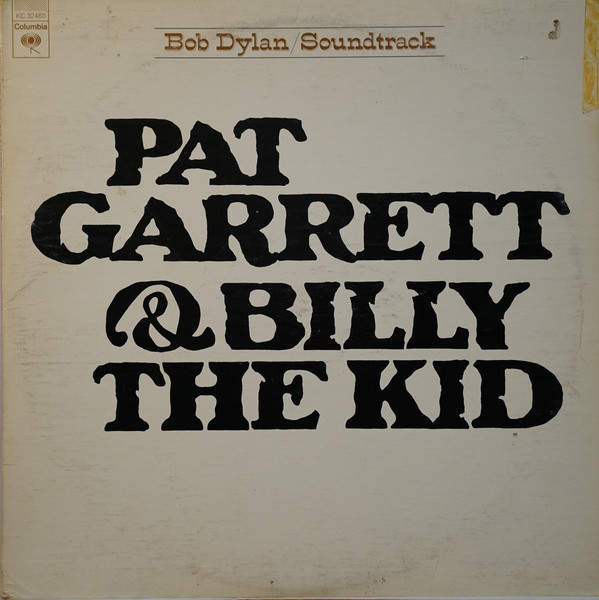
MR: Let’s move on to Pat Garrett & Billy the Kid. Thoughts?
GB: Oh god. I heard it for the first time for this; don’t know if I need to go back.
NB: A bit too rambling? I do like the title theme and “Billy 4.”
GB: Yes – and I take that back; I made a point of listening to it in Silver City last summer. I can’t hear “Knockin’ On Heaven’s Door” without hearing Axl, which kinda sucks. “Billy 4” is good.
NB: This is not essential Dylan.
MR: Probably not essential, but I enjoy it.
NB: Do we agree that “Billy 4” is the best of the Billy’s?
GB: Yes. “Billy 1” and “Billy 7” can go straight to hell.
MR: I think I like “Billy 1” the most. Seriously. It also has the best rating on Rate Your Music…
GB: Who had a better cantina theme, Billy or Mos Eisley?
MR: Ooh, good question.
GB: There is a little Townes Van Zandt – “Pancho and Lefty” – to this album.
MR: Little bit.
GB: …but it’s a fan’s record.
MR: I enjoy it. It’s not trying to do too much and remains enjoyable. I honestly think I listen to it more than a couple of the others from this era.
NB: It’s a solid record.
MR: Solid. Not amazing, but solid. I like it.
GB: I could see that – it’s good ambient.
MR: Let’s cover the rest of the Bootleg Series stuff here.
NB: How about “Wallflower” and “Nobody ‘Cept You”? I like them both!
GB: “Wallflower” is fun within period context.
MR: “Wallflower” is fine. His kid named a band after it, so…
NB: Right.
MR: As I mentioned before, I think the Bootleg version of “If Not for You” – with George Harrison – is the best take of it.
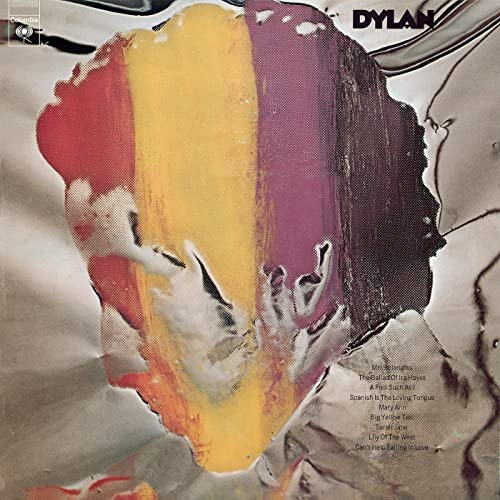
MR: Okay. Let’s talk about Dylan. Did either of you give it a listen?
NB: Nope. I have heard “Mr. Bojangles.”
GB: Oh god, that was not fun. Very frustrating. It was like reading someone’s outline for a first draft. In fairness I’ve only been through it twice. Maybe it grows on you.
MR: I don’t think it’s ever been widely released on CD. I have it on vinyl, and it’s on Spotify. My understanding is that Columbia released it just to piss him off, after he bolted for Asylum. It was just some leftover tracks, and they put it out to fulfill his contract. Then, he was back with Columbia by the time of Blood on the Tracks.
GB: “Ira Hayes” barely works for Johnny. It doesn’t work for Bob.
MR: Correct. I don’t really care for either. “Ira” has just always seemed like an awkward song to me.
NB: I hate the original “Big Yellow Taxi” and am afraid to hear his version.
MR: “Big Yellow Taxi” barely works for Joni. It doesn’t work for Bob.
NB: The version of “Spanish is the Loving Tongue” on this is not good.
MR: There’s not a lot worth discussing on Dylan. Like Self Portrait, it’s not as bad as its reputation suggests, but it is also not essential. I like “Lily of the West” – super Frank Black-ish. There are some kind of dorky backing vocals, but it’s otherwise cool. Other than that, this album didn’t really grab me.
NB: “Lily” is cool.
GB: Yes, “Lily” is cool.

MR: I think we can move on to Planet Waves.
NB: He’s back with The Band.
MR: Yeah, it has that going for it.
GB: One of the things I did in prep was listen to his contemporaries. Compared to Creedence, it fits. Makes me wonder what was influencing him. A little more zydeco than we’re used to.
NB: “On A Night Like This” is a great opener. I’ve always liked it.
MR: It’s fine. I don’t love it, but there’s stuff that I like less on the album. There’s a kind of cool guitar thing that happens in “Going Going Gone” that I like. It happens at the end of each chorus. Just a super aggressive “bent” chord. Probably Robbie Robertson.
NB: Yeah, that is cool. It bounces around like mad. Do we like “Tough Mama”?
MR: I guess “Tough Mama” isn’t that bad.
GB: I don’t. Maybe I do. It’s got a Rolling Thunder Revue [Dylan’s 1975-76 concert tour] feel to it.
NB: Yeah, it’s not terrible.
MR: It’s also not great, but whatever…
GB: Which “Forever Young” is better: “sad” or “Pepsi commercial”?
MR: Neither of these versions of “Forever Young” are my favorite. I definitely prefer the stripped-down version that closes out the Biograph box set. As for the album versions, definitely the first. The second one is not good, and totally unnecessary.
NB: The longer, slower one is superior. How about “Hazel”?
MR: “Hazel” feels about twice as long as it actually is.
GB: There’s better stuff, but I could see it on Desire [Dylan’s 1976 LP].
MR: There’s a bit of the Desire sound starting to creep in on this album – although it was recorded with a totally different band – but the songs on that album are just way better.
NB: “Something There Is About You” is decent.
GB: I like “Dirge,” some. There is a reluctance that I dig.
NB: “Dirge” is decent.
MR: Yeah, it’s okay. I think that’s the best descriptor for this album: “okay.” I swear I thought “You Angel You” was one of his eighties songs. It’s a sign of bad things to come.
NB: “You Angel You” is not okay.
GB: It’s just so “radio polished.”
MR: Like New Morning, this album really falls apart at the end, though I do think it rebounds a little on “Wedding Song.”
NB: I think I listened to “Wedding Song” about three times in a row the first time I heard this record.
MR: Alright. Let’s do a quick recap, and then the playlist. Favorite album? Least favorite?
NB: New Morning is my least, I think. Favorite is The Basement Tapes if it counts; John Wesley Harding if it doesn’t.
GB: Favorite is a tough call between John Wesley Harding and Nashville Skyline; going to go with John Wesley Harding, but it’s close. Planet Waves is my least, besides Dylan, which I refuse to count.
MR: Favorite is The Basement Tapes, but for the actual “intended” albums, it’s definitely John Wesley Harding. Least is Dylan, but again, that wasn’t really something he signed off on. Of the remainders, Planet Waves holds the least value for me.
NB: I’m okay with Planet Waves being last, actually.
MR: I had never dived into this era of Dylan in such an isolated manner. Usually I hear these albums in the midst of a deep Dylan kick. It was kind of interesting to take it in as its own thing.
GB: It’s funny; if you asked me to pick a random Dylan album to put on, better than 50/50 I would pick either John Wesley Harding or Nashville Skyline over any of his others, honestly. I listen to the others to ‘listen’ to them. I listen to these for music.
MR: George described these albums as having a Sunday morning vibe earlier. I can definitely see that with all of them. For some, it’s a good, relaxing Sunday morning after a great Saturday night. For others, it’s like a shitty Sunday at the end of spring break, where you realize you didn’t get anything done that you needed to, and now have to drag yourself back to work the next day. Some of these records – I’m really thinking of Planet Waves – seem the latter very much – obligatory in nature. It’s like he made a record because he had to, but brought The Band in, in hopes of injecting some life to an otherwise (largely) uninspired bunch of tracks.
NB: We should have talked about Street Legal also.
GB: That’s the next wilderness.
MR: We will definitely need to do a sequel. I’m afraid of the 80s one, but I know it ends well at least. I love Oh Mercy.
NB: Infidels is decent.
MR: …but that’s for another time.
MR: Let’s do the playlist thing. Five picks each. Bert, then George, and I’ll round it out. George, please don’t pick the shitty version of “Went to See the Gypsy.”
GB: I reserve my right to pick my songs. You know my track record.
MR: You owe me one for your pick of “My Favorite Kiss” on the Frank Black playlist.
GB: Exactly. I stand by it – was listening to that song yesterday.
NB: #1. “Going to Acapulco”
MR: Oooh. Interesting…
GB: Good pick. “Tell Me That Isn’t True”
MR: “Went to See the Gypsy [Demo].” Ha! That better keep you from picking the bad one. Can’t be on here twice.
GB: I mean, okay, but just know that you’re wrong.
NB: “Nobody ‘Cept You”
MR: I always mix up “Nobody ‘Cept You” and “You Angel You,” which George will probably pick, given his track record.
GB: “The Ballad of Frankie Lee and Judas Priest”
MR: “I Dreamed I Saw St. Augustine”
NB: “Watching the River Flow”
GB: “The Man in Me”
MR: “If Not for You” (with George Harrison). Round 4:
NB: “Wedding Song”
GB: “Quinn the Eskimo”
MR: “Forever Young [Demo]” Last round:
NB: “I Pity the Poor Immigrant”
MR: Pick “I Threw It All Away,” George.
GB: This last pick is always a tough call.
NB: I almost picked that. Someone has to!
MR: Yeah. I really want “Alberta” on there too.
GB: That makes it easier. “Alberta #1”
MR: Okay. Then I’ll take “I Threw It All Away.”
NB: Nice!
MR: This is gonna be an interesting one. We avoided the major songs – “Lay Lady Lay,” “All Along the Watchtower,” “Knockin’ on Heaven’s Door.” Should be a pretty laid-back mix.
GB: Perfect. Good season opener.


